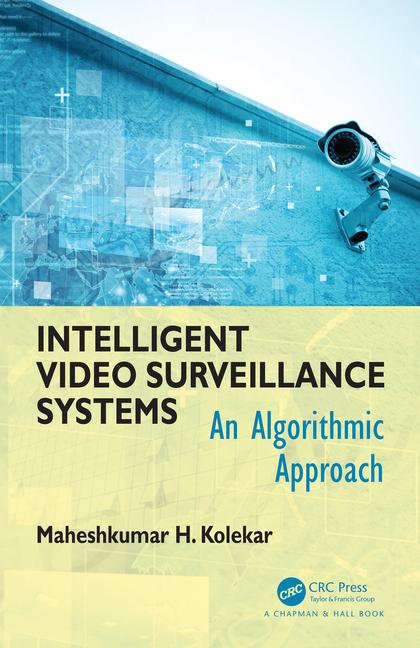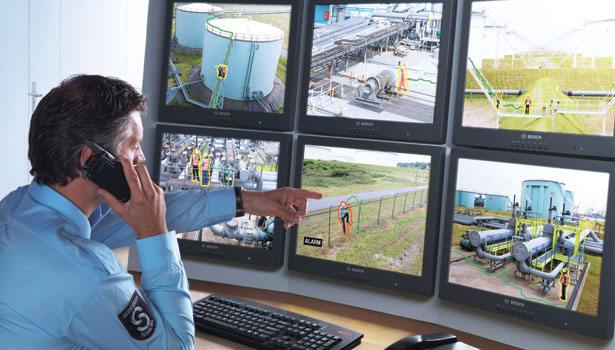Using Video Management Systems for Effective Investigations






It’s a matter of flexibility, contends Colin Adderley. Bryant Garrett adds integration and scalability, in addition to flexibility, to his needs. For Robert Knell, it’s the perfect bundle: a system providing a wide spectrum of features, granular configuration options, creating a highly flexible and customizable solution.
It’s video management software or VMS, the heart of a growing number of enterprise and government security systems. Current and emerging VMS approaches incorporate more intelligence into their design, including video analytics and the ability to interface with life safety and access control systems. With advancement of high-definition video, megapixel cameras and IP infrastructures, VMS is evolving to be more than just a security solution.
Basically, a VMS receives video from cameras and allows someone to view that video either live or recorded. There are three main functions. First is live monitoring, which accounts for less of uses these days but still important. The second is the ability to react to alarms or events, which can be triggered by something as simple as a motion detector or input from an access control system. The third is the use of VMS as an investigation tool – forensics – to figure out what has happened.
Consider Expansion
A VMS provides a cost-effective way to continually upgrade and expand solutions without having to completely rip out an old system. It can also act as a video enabler for other security and business systems. A VMS is also a way to bring down costs by incorporating more components into an overall solution.
With forensics, there is equally more VMS focus on tools such as search, synopsis and metadata. Now that VMS platforms are being recognized as the real “brain” of systems, emphasis shifts to interfaces and experiences like centralized control with local access options, automatic device discovery, flexible administrative rules, intuitive navigation for different skill levels and more.
One example: The City of Calgary’s light rail transit system called CTrain employs Genetec’s Omnicast video surveillance platform to keep passengers safe. “One of the major advantages of choosing Omnicast is its flexibility,” says Adderley, project manager and engineer for the city. “The flexibility in architectural design of the system has allowed us to minimize single points of failure along all portions of the system. And the open architecture allows us to use our ‘flavor of the day’ cameras to accommodate vendor competition through different product life cycles. Plus, the whole system is cheaper on a per-camera basis so we can maximize our coverage with allocated funds.”
Moving Beyond Legacy Gear
When CTrain was first built, a security video system was installed comprising a matrix of analog cameras transmitting analog video to tapes, and eventually digital video recorders, which processed and archived the footage.
In searching for a suitable replacement, several qualities were paramount. Calgary needed an open platform system to maximize flexibility under strict procurement models, as well as a mature and proven piece of software that could easily integrate with their large monitor wall and run across multiple work stations. The CTrain also required a multitude of software configuration options and the ability to easily scale the system as needed based on the addition of new transit stations to the CTrain’s constantly growing lines.
An IP solution was deemed most suitable, providing reduced infrastructure costs for a system that would be spread across a number of physical locations (i.e., stations), as well as increased system security. An added benefit would be the creation of a robust network. This would not only house the security platform, but also facilitate an evolution in the transit organization. The network would provide a technologically advanced backbone on which all aspects of the CTrain’s management could rely and interplay smoothly.
System Integration, Too
The Omnicast platform integrates with a number of other systems to streamline the CTrain’s operations.
Active Directory is integrated to efficiently manage administration and organization of user profiles; SNMP (simple network management protocol) monitoring is also enabled, to provide an extra layer of reliability by alerting both operators and the integrator if any network connected device experiences a fault or performance issue. Most importantly, Omnicast has been integrated with the CTrain’s supervisory control and data acquisition) system. The SCADA system controls operator interaction with various events, often mechanical, including movement of elevators and escalators, and response to station help phones. Integration means that the SCADA system will drive alerts or requests via a serial to digital interface to the videowall and operator.
With years of experience in airport security, Garrett, CFO and chief of the Orlando Sanford International Airport (SFB) Police Department, had specific requirements. First, he wanted a video management system that would be integrative, scalable and flexible: “A non-proprietary system would allow [us] to get competitive bids from multiple hardware vendors.” Additionally, he wanted to be able to have a multiple camera screen presentation and the functionality to manipulate PTZ cameras. Most importantly, he wanted to be able to quickly switch from live to archived videos and easily export selections of archived videos in high quality format for other authorities to review from another monitoring station.
SFB decided to begin its analog-to-digital security conversion with the 150 cameras that were already in place and added another 80 cameras. Using existing fiber optic cable, the integrator, SiteSecure, built a dedicated IP video network. With this new IP infrastructure, Omnicast’s open architecture enabled SFB to both keep and choose their preferred server and hardware, and additionally gave them a very scalable solution which they could grow very easily.
Live Monitoring
Dispatchers monitor Sanford Airport from a remote control center. Furthermore, the intuitive drag-and-drop user interface proved popular with SFB’s personnel who found it to be simple and uncomplicated.
When the security center installation was complete, the police department in Watertown, Mass., had a system tying into 42 video cameras and 72 access controlled points. Officer Knell, systems administrator, says that implementation went “very well – a lot better than we were expecting. We had none of the issues we’ve had with other vendors, and any minor changes, such as camera angle adjustments, have been handled speedily by Signet Electronic Systems,” the integrator.
Watertown’s police department uses Bosch and Axis cameras, Genetec’s unified security platform, Security Center, which unifies Omnicast video surveillance and Synergis access control systems all in one solution.
Watertown PD is monitored 24/7, with video feeds used for real-time surveillance of prisoners as well as other spot monitoring. The prisoner and interview room feeds are burned directly to disk for indefinite archiving. All other video archives are kept for investigative purposes for a minimum of 30 days via a two terabyte storage system. There are plans to increase the storage capacity to extend past 30 days in the near future.
Looking for a reprint of this article?
From high-res PDFs to custom plaques, order your copy today!












